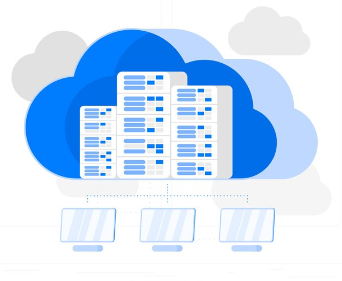Cloud Server Hosting Price
In today’s digital landscape, cloud server hosting has emerged as a cornerstone of modern infrastructure, providing businesses with unparalleled flexibility, scalability, and reliability.
However, amidst the myriad of benefits, one crucial factor often takes center stage: price. Understanding the intricacies of cloud server hosting pricing is paramount for businesses seeking to optimize their IT expenditure without compromising performance.
Let’s delve into the nuances of cloud server hosting pricing and explore key considerations that can help businesses navigate this complex landscape with confidence.
Factors Affecting Cloud Server Hosting Price
When it comes to cloud server hosting, pricing is influenced by a multitude of factors, each playing a significant role in determining the overall cost.
Hardware specifications
At the heart of cloud server hosting pricing lies hardware specifications, encompassing vital components such as CPU, RAM, and storage capacity.
The computational power and storage resources allocated to a virtual instance directly impact its pricing. Moreover, bandwidth allowance, governing the volume of data transferred to and from the server, also contributes to the overall cost.
Operating system
The choice between Linux and Windows operating systems not only dictates the functionalities available to users but also incurs distinct pricing structures. Licensing costs associated with Windows-based servers often elevate the overall expenditure compared to their Linux counterparts.
Scalability options
Cloud hosting offers unparalleled scalability, allowing businesses to adjust resources dynamically in response to fluctuating demand.
Vertical scaling involves upgrading or downgrading the resources of a single server instance, while horizontal scaling entails adding or removing instances to distribute workload. The scalability model adopted significantly influences pricing dynamics.
Data center location
The geographical location of data centers holds profound implications for latency and performance. Proximity to target markets minimizes latency, enhancing user experience.
However, data center location also introduces regional pricing disparities, as operating costs vary across different locations.
Types of Pricing Models
Cloud hosting providers offer diverse pricing models tailored to accommodate varying business needs and usage patterns.
Pay-As-You-Go (PAYG)*
PAYG model charges users based on actual resource consumption, offering flexibility and eliminating the need for long-term commitments. While PAYG ensures cost efficiency for sporadic workloads, it may result in unpredictable expenditure, especially during peak usage periods.
Reserved Instances
Reserved Instances entail upfront commitment in exchange for significant cost savings over the long term. By reserving capacity for a specific duration, businesses can secure discounted rates, making it an attractive option for stable workloads with predictable resource requirements.
Spot Instances
Spot Instances leverage unused capacity at reduced rates, providing substantial cost savings for flexible workloads. However, the trade-off lies in the potential, for instance, termination during high-demand periods, necessitating robust fault-tolerance mechanisms.
Hybrid pricing options
Hybrid pricing models amalgamate elements of different pricing structures, offering a bespoke solution to balance cost efficiency and flexibility. By combining PAYG, Reserved Instances, and Spot Instances judiciously, businesses can optimize cost while accommodating dynamic workload patterns.
Comparing Leading Cloud Hosting Providers
The choice of cloud hosting provider plays a pivotal role in determining pricing dynamics, with industry giants offering distinct pricing structures and value propositions.
Amazon Web Services (AWS)
AWS boasts a comprehensive pricing structure, characterized by granular billing components tailored to diverse use cases. Its cost calculator tool empowers users to estimate expenditures accurately, enabling informed decision-making.
Microsoft Azure
Microsoft Azure offers flexible pricing tiers and discounts, catering to enterprises of all sizes. With a focus on enterprise-grade services and seamless integration with the Microsoft ecosystem, Azure presents compelling value propositions for businesses seeking a holistic cloud solution.
Google Cloud Platform (GCP)
GCP distinguishes itself through transparent pricing and generous free-tier offerings, allowing users to explore its services without incurring substantial costs. Its commitment to sustainability and innovation resonates with environmentally conscious businesses.
Strategies for Cost Optimization
Cost optimization strategies play a pivotal role in maximizing the value derived from cloud hosting investments.
Right-sizing resources
Identifying underutilized instances and adjusting resource allocation accordingly is essential for optimizing costs without compromising performance. Implementing auto-scaling mechanisms ensures dynamic resource allocation in response to workload fluctuations.
Utilizing cost management tools
Leveraging robust cost management tools enables businesses to monitor expenses in real time, track usage patterns, and set budget alerts to prevent cost overruns proactively.
Optimizing data transfer costs
Minimizing data transfer costs through the strategic deployment of content delivery networks (CDNs) and optimizing inter-region traffic helps mitigate expenditures associated with data transfer.
Case Studies: Real-World Cost Examples
Examining real-world scenarios provides valuable insights into the practical implications of cloud hosting pricing.
Small business scenario
For small businesses operating under budget constraints, optimizing resource utilization and leveraging PAYG models can ensure cost efficiency without compromising scalability.
Enterprise use case
Enterprises grappling with scale requirements can benefit from Reserved Instances to secure cost savings while maintaining predictability and stability.
Startup perspective
Startups navigating the delicate balance between growth and cost control can leverage hybrid pricing options to scale dynamically while optimizing expenditure.
Future Trends in Cloud Hosting Pricing
Anticipating future trends is essential for staying ahead of the curve in the rapidly evolving landscape of cloud hosting pricing.
Predictive pricing models
AI-driven predictive pricing models are poised to revolutionize cost optimization, leveraging machine learning algorithms to forecast resource utilization accurately and recommend cost-saving measures proactively.
Serverless computing impact
The rise of serverless computing heralds a paradigm shift in pricing models, with pay-per-execution models offering unprecedented granularity and cost efficiency for event-driven workloads.
Regulatory considerations
Emerging regulatory frameworks pertaining to data sovereignty and compliance pose unique challenges for cloud hosting providers, necessitating adaptations in pricing strategies to accommodate regulatory requirements.
Conclusion
In conclusion, cloud server hosting pricing is a multifaceted landscape shaped by a myriad of factors ranging from hardware specifications to pricing models and future trends.
By understanding the nuances of pricing dynamics and adopting proactive cost optimization strategies, businesses can navigate this intricate terrain with confidence. Balancing cost considerations with performance and scalability is paramount for unlocking the full potential of cloud hosting in driving innovation and growth.
As businesses embark on their cloud journey, meticulous attention to pricing intricacies will undoubtedly be the cornerstone of success in the digital age.






